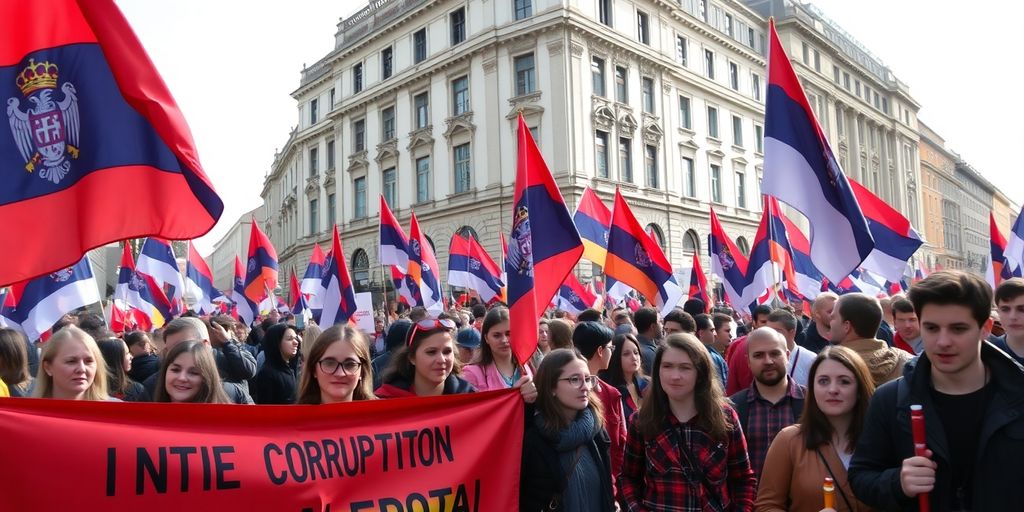In a historic display of unity and determination, Serbian students have taken the lead in a nationwide movement against corruption, culminating in a massive protest in Belgrade that drew over 100,000 participants. This movement, sparked by a tragic incident at a train station, has galvanized citizens across the country to demand accountability and systemic reforms from the government.
Key Takeaways
- Over 100,000 people participated in the recent protests in Belgrade, marking one of the largest demonstrations in Serbian history.
- The protests were ignited by a canopy collapse at the Novi Sad train station, which killed 16 people, highlighting systemic corruption.
- Students have organized blockades and assemblies, demanding transparency and justice from the government.
- The movement has gained momentum, with calls for the resignation of President Aleksandar Vučić and significant political reforms.
The Spark of Protest
The protests began in response to the tragic collapse of a newly renovated canopy at the Novi Sad train station in November 2024, which resulted in the deaths of 16 individuals. This incident exposed the deep-rooted corruption and negligence within the Serbian government, prompting citizens to take to the streets in search of justice and accountability.
The student-led protests have been characterized by their peaceful nature, with demonstrators calling for an end to corruption and the publication of documents related to the renovation of the train station. The students have effectively mobilized support from various sectors of society, including farmers, teachers, and professionals, creating a broad coalition against the ruling government.
A Movement Gaining Momentum
The protests have seen significant participation, with estimates suggesting that between 275,000 and 375,000 people joined the streets of Belgrade on March 15, 2025. This massive turnout is indicative of the widespread discontent with President Vučić’s administration and the desire for systemic change.
Key strategies employed by the students include:
- Traffic Blockades: Students have organized blockades at universities and major roads to draw attention to their cause.
- Public Assemblies: Regular assemblies allow students to vote on key decisions and strategies for the movement.
- Symbolic Actions: Students have undertaken symbolic journeys, such as cycling across Europe to raise awareness and garner support from European leaders.
Government Response and Future Outlook
In response to the mounting pressure, Prime Minister Miloš Vučević resigned, and President Vučić has promised to form a new government by April 18, 2025. However, many protesters remain skeptical about the sincerity of these promises, fearing that without genuine reforms, the status quo will persist.
The students and their supporters are not just fighting for immediate political changes; they are advocating for a complete overhaul of the political system in Serbia. Their demands include:
- End to Ruling-Party Control: Calls for independence of media and anticorruption bodies.
- Restoration of Free Elections: Ensuring fair electoral processes free from manipulation.
- Accountability for Corruption: Legal actions against those responsible for the Novi Sad tragedy and other corrupt practices.
Conclusion
The student-led protests in Serbia represent a significant moment in the country’s history, as citizens unite against corruption and demand accountability from their leaders. As the movement continues to grow, it remains to be seen whether the government will respond with meaningful reforms or attempt to suppress dissent. The outcome of this struggle could have lasting implications for democracy and governance in Serbia.
Sources
- An estimated 100,000 join antigovernment rally in Serbia’s Belgrade | Protests News, Al Jazeera.
- A Moment of Reckoning for Serbian Corruption, Freedom House.
- Serbian students lead the fight against corruption, France 24.
- How Serbia’s Student Protest Movement Is Challenging Vucic, Foreign Policy.





